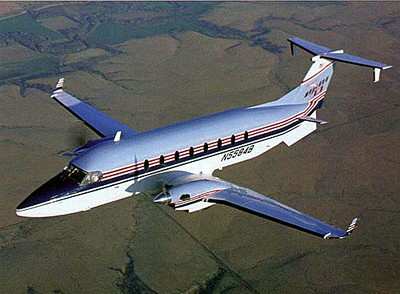Four Fatally Injured When Airplane Went Down
The NTSB has released a preliminary report from an accident that occurred on February 11, 2015 involving a Beech 1900C airplane of Venezuelan registration in which four people were fatally injured.

According to the report, at 1439 eastern standard time, the airplane, which was registered to Servicio Pan American de Proteccion and operated by Brinks Inc., was destroyed during collision with terrain, following a loss of engine thrust during initial climb from Kendall-Tamiami Executive Airport (KTMB), Miami, FL. The two foreign certificated pilots and two passengers were fatally injured. The repositioning flight was conducted under the provisions of 14 Code of Federal Regulations Part 91. Visual meteorological conditions prevailed and an instrument flight rules flight plan was filed for the planned flight to Providenciales International Airport (MBPV), Providenciales, Turks and Caicos.
The twenty-one-seat airplane, serial number UC-47, was manufactured in 1988. It was powered by two Pratt and Whitney Canada PT6A-65B, 1,100 horsepower engines, equipped with four-blade, controllable-pitch, Hartzell HC-B4MP-3C propellers. Review of maintenance records revealed that the left engine propeller had been due for overhaul. It was removed and replaced with an overhauled propeller prior to the accident flight and the accident flight was the first flight after the overhauled propeller was installed on the left engine.
Review of radar and communication data from the Federal Aviation Administration revealed that the flight was cleared for takeoff at 1436:45. At 1438:15, one of the pilots reported an "engine failure" to air traffic control. The controller asked the pilot if he would like to return to the airport and the pilot replied affirmative. The controller then offered a 180-degree turn to runway 9R and the pilot requested a left traffic pattern to runway 27L, which the controller approved; however, the airplane subsequently impacted a utility pole and terrain about 2 miles west of the runway. Review of radar data revealed that six targets were recorded during the accident flight. The first target was recorded at 1438:18, at an altitude of 200 feet mean sea level (msl) about 1,000 feet beyond the departure end of runway 27L. The next three targets indicated a slight left turn at 300 feet msl. The fifth target indicated a continued slight left turn at 200 feet msl. The last target was recorded at 1439:19,
indicating 100 feet msl, next to the utility pole that was struck. Witnesses observed the airplane flying low, with the left wing down and the left propeller turning slower than the right propeller, before the airplane impacted the utility pole.
The airplane came to rest upright in a field against several trees, oriented about a magnetic heading of 110 degrees. The beginning of a debris path was observed near a severed utility pole where scrape marks across the adjacent road were consistent with left wingtip contact. Additionally, sections of left propeller blades were located near the utility pole and along the debris path, consistent with the left propeller impacting the utility pole as the left wingtip was scraping the ground. The debris path extended about 240 feet, on a magnetic heading of 240 degrees, to the main wreckage.
A postcrash fire consumed a majority of the cockpit and cabin. The horizontal stabilizer, vertical stabilizer, elevator, and rudder remained intact and were charred. The left and right wing mid-sections had been consumed by fire. The wing flaps and landing gear were in the retracted position. The right propeller remained attached to the right engine and all four composite propeller blades separated at the hub. The right engine exhaust duct exhibited torsional bending and compression. The left propeller remained attached to the left engine and two of the four composite propeller blades had separated at the hub. The other two blades separated about 1 foot from the hub. The left engine exhaust duct exhibited some compression. Both engines and propellers were retained for further examination. The airplane was equipped with a cockpit voice recorder and flight data recorder, which were forwarded to the NTSB Recorders Laboratory, Washington, D.C., for readout.
(Image from file. Not accident airplane)
 Bolen Gives Congress a Rare Thumbs-Up
Bolen Gives Congress a Rare Thumbs-Up The SportPlane Resource Guide RETURNS!!!!
The SportPlane Resource Guide RETURNS!!!! Buying Sprees Continue: Textron eAviation Takes On Amazilia Aerospace
Buying Sprees Continue: Textron eAviation Takes On Amazilia Aerospace Hawker 4000 Bizjets Gain Nav System, Data Link STC
Hawker 4000 Bizjets Gain Nav System, Data Link STC Echodyne Gets BVLOS Waiver for AiRanger Aircraft
Echodyne Gets BVLOS Waiver for AiRanger Aircraft



